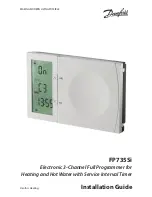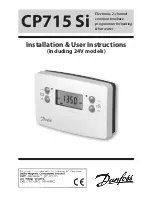
3.1. Power Supply
The DFA can be operated either with a 24 V
AC
or 24 V
DC
power supply.
► AC (Terminals 9 + 10)
At these terminals a 24 V
AC
voltage may be connected as the power supply. The supply point must
be able to provide an output of at least 10 VA. If the 24 V
AC
supply is selected, the DFA will make a
24 V
DC
output voltage available at terminal 5 (DC+) which may be connected via push-buttons to the
control inputs.
!
No other loads other than the buttons for the DFA control inputs may be connected to this avail-
able 24 V
DC
supply.
► DC+ (Terminal 5) / DC- (Terminal 6)
If a 24 V
DC
voltage supply is available it should be connected to these two terminals.
3.2. Control Inputs
If the DFA is being supplied by 24 V
DC
, then the control inputs (connecting, disconnecting, tripping) are
to be connected via push-buttons to the + potential of this supply voltage and triggered via operating
pulses.
In the case of a 24 V
AC
power supply, terminal 5 (DC+) serves as reference point for the push- buttons
of the control inputs.
► Connecting (Terminal 2)
A short operating pulse at this input results in the flange-mounted RCCB being switched on. If it is
already connected, no switching will occur.
► Disconnecting (Terminal 3)
If a short operating pulse is given at this input, the mounted RCCB will be switched off, provided it has
not already been disconnected.
► Tripping (Terminal 4)
A short operating pulse at this input results in a test residual operating current I
∆
being transmitted for
400 ms to the connected RCCB which should cause the latter to trip during this time. However, the
RCCB must have been connected beforehand otherwise there will be no reaction to the input signal.
If the RCCB does not trip (toggle of the RCCB not in central position) the status LED will signal flash
code 2 (see “Flash Codes”, p. 19). This can be reset by briefly switching the DFA off with the rotary
switch on the enclosure cover (RESET) or by disconnecting the DFA from the operating voltage for a
short time.
!
After an unsuccessful tripping attempt, i. e. when flash code 2 is signalled, a further tripping
attempt should not be made – as would be the case with a normally operated RCCB – until after
approx. 30 seconds, in order not to overload the test circuit.
Doepke
16









































